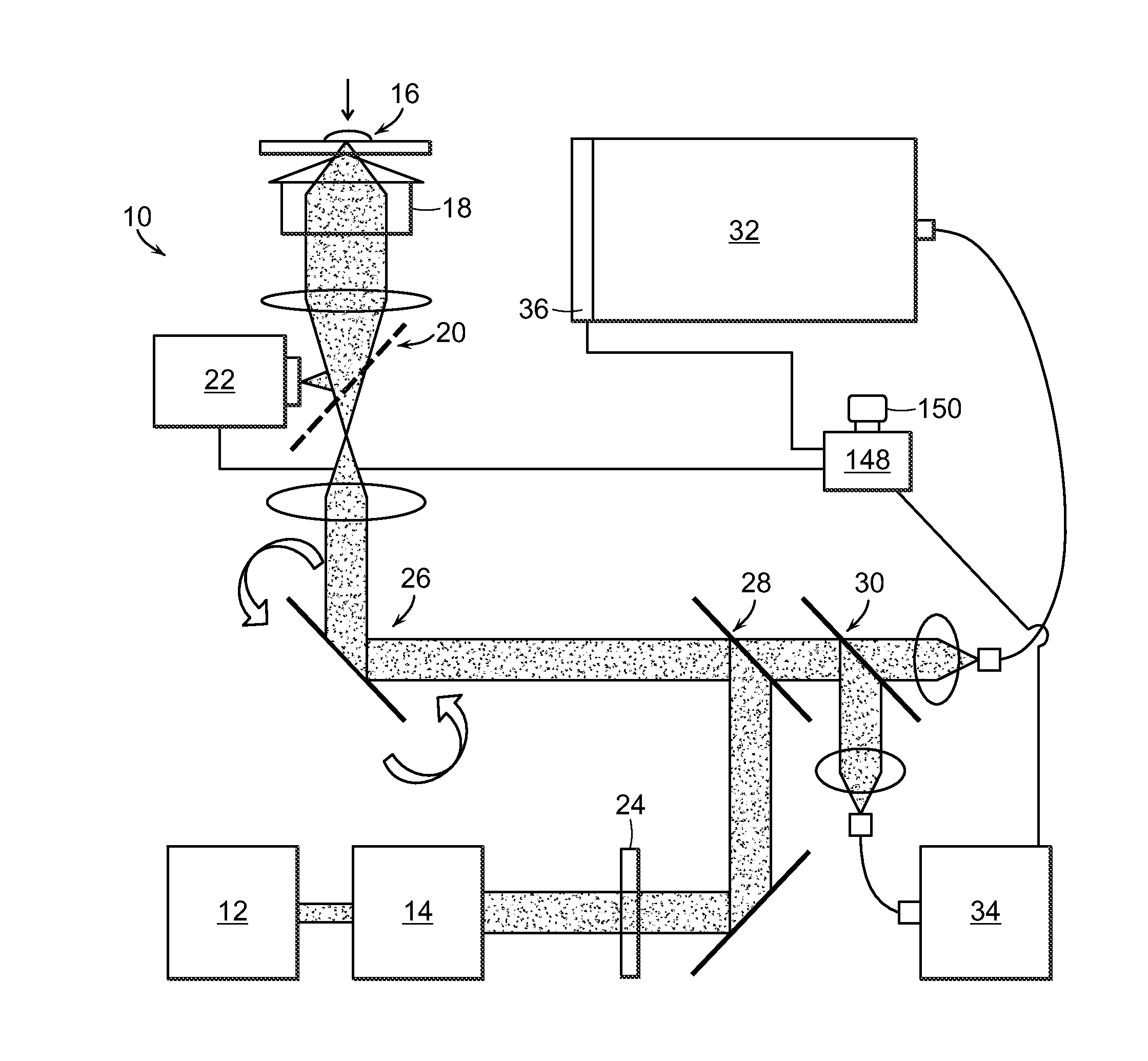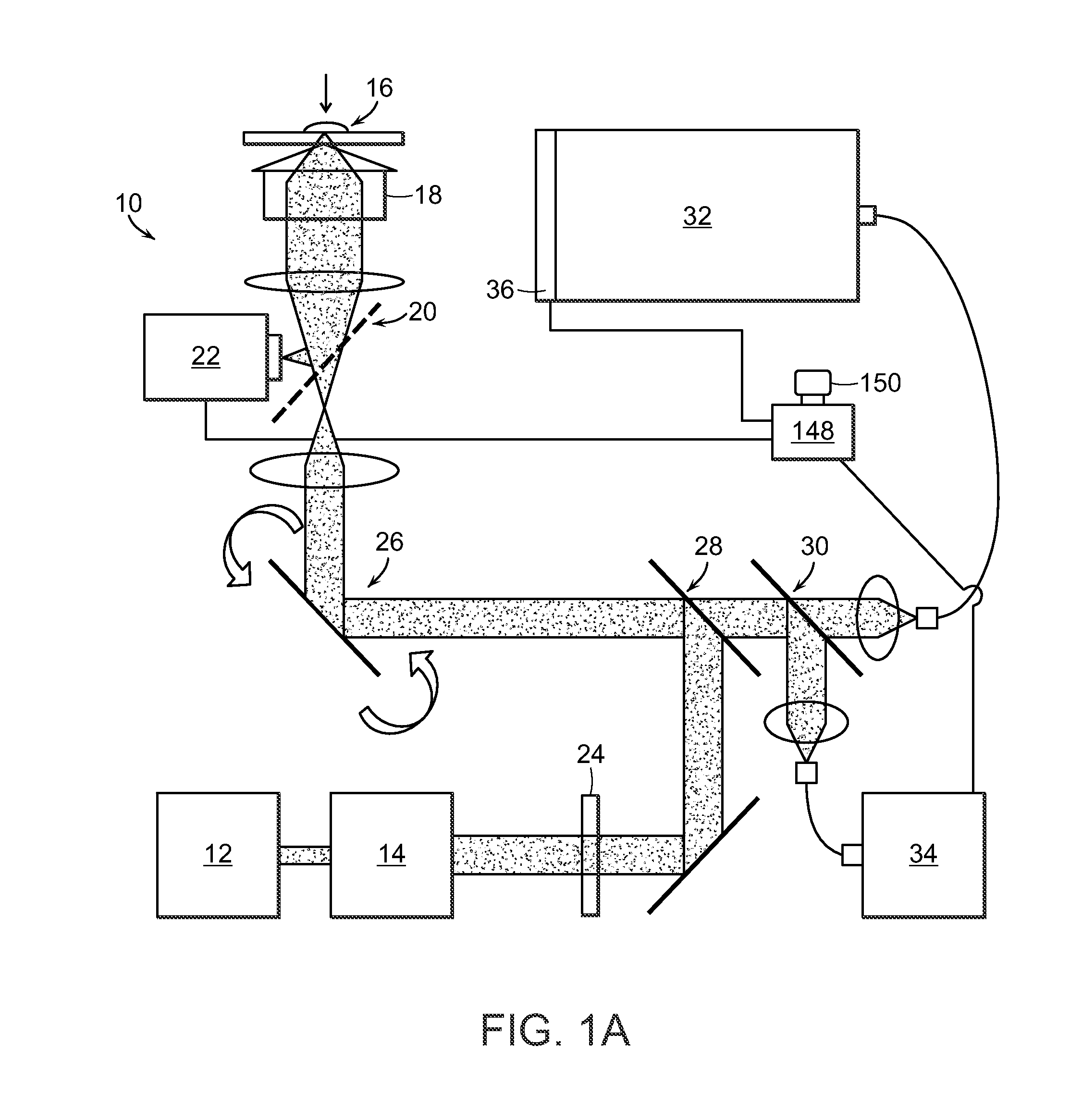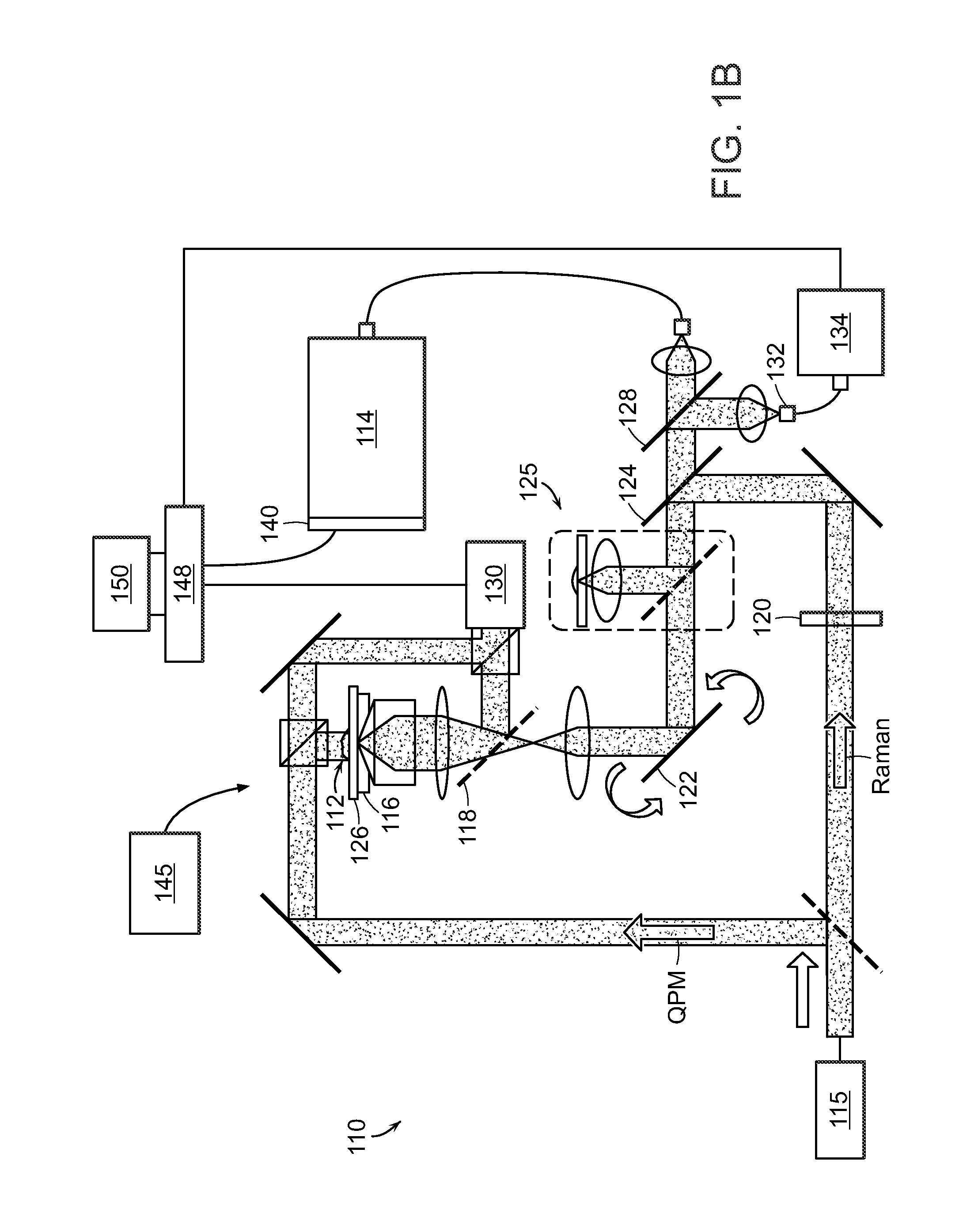Raman spectroscopy for detection of glycated analytes
a glycated analyte and spectroscopy technology, applied in the field of raman spectroscopy for detection of glycated analytes, can solve the problems of difficult quantification of hba1c using serss, high blood glucose, interference with hba1c determination, etc., to achieve high degree of prediction accuracy, facilitate accurate classification, and excellent reproducibility of spectral characteristics
- Summary
- Abstract
- Description
- Claims
- Application Information
AI Technical Summary
Benefits of technology
Problems solved by technology
Method used
Image
Examples
Embodiment Construction
[0029]The present invention provides a method for the detection of one or more glycated analytes in a sample using Raman shifted light. The method can include obtaining a solution of the sample analyte and processing the solution such as by concentrating the sample. Subsequently, the concentrated sample can be illuminated with light and Raman data is acquired from the concentrated sample. The Raman data is then anaylyzed to determine levels of glycated analytes.
[0030]Said analytes are typically proteins, but can also be peptides, nucleotides, glycans and the like. In a preferred embodiment, the analytes are selected from the group consisting of hemoglobin and serum albumin. In another embodiment the sample is selected from the group consisting of serum and whole blood.
[0031]The present invention also provides methods for the simultaneous detection of levels of glycated hemoglobin and serum albumin. In a preferred embodiment, an aliquot of the solution is placed on a surface and air ...
PUM
| Property | Measurement | Unit |
|---|---|---|
| diameter | aaaaa | aaaaa |
| diameter | aaaaa | aaaaa |
| distance | aaaaa | aaaaa |
Abstract
Description
Claims
Application Information
 Login to View More
Login to View More - R&D
- Intellectual Property
- Life Sciences
- Materials
- Tech Scout
- Unparalleled Data Quality
- Higher Quality Content
- 60% Fewer Hallucinations
Browse by: Latest US Patents, China's latest patents, Technical Efficacy Thesaurus, Application Domain, Technology Topic, Popular Technical Reports.
© 2025 PatSnap. All rights reserved.Legal|Privacy policy|Modern Slavery Act Transparency Statement|Sitemap|About US| Contact US: help@patsnap.com



